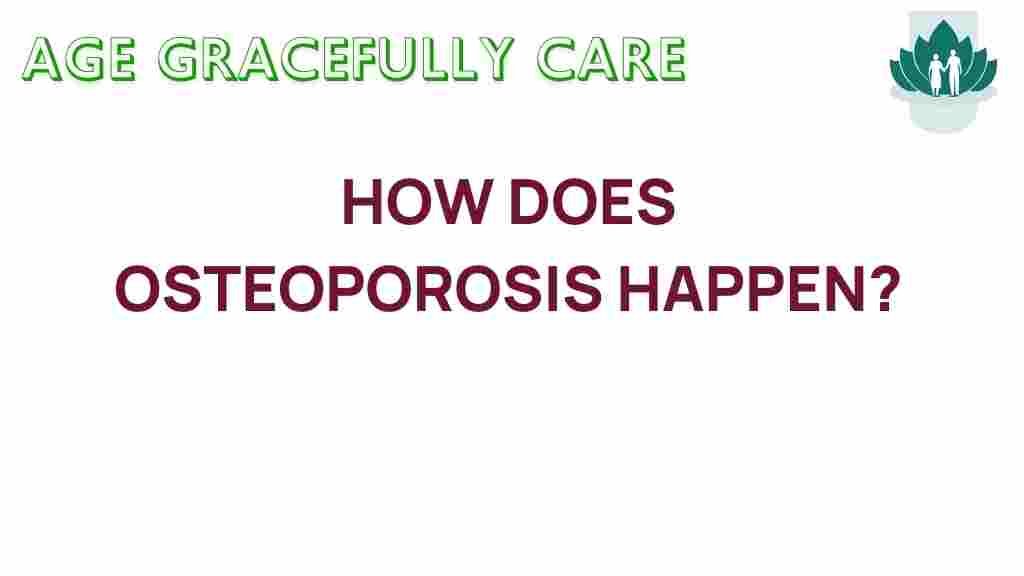Unraveling Osteoporosis: Understanding Its Causes and Impact
Osteoporosis is a silent disease that affects millions of individuals worldwide, primarily older adults. It is characterized by decreased bone density and increased fragility, leading to a higher risk of fractures. Understanding osteoporosis is crucial for maintaining bone health, especially as we age. This article delves into the causes, risk factors, symptoms, diagnosis, and prevention strategies for osteoporosis.
What is Osteoporosis?
Osteoporosis is a condition that results in weakened bones, making them more susceptible to fractures. It occurs when the creation of new bone doesn’t keep up with the removal of old bone. This imbalance can lead to serious health issues, including hip, spine, and wrist fractures. Osteoporosis is often referred to as a “silent disease” because it can progress without any symptoms until a fracture occurs.
Understanding Bone Health
Bone health is vital for overall well-being. Bones are living tissues that constantly undergo remodeling, which involves the process of bone formation and resorption. The peak bone mass is generally reached in early adulthood, and after this stage, bone density gradually declines, particularly in women after menopause.
Risk Factors for Osteoporosis
Identifying the risk factors is essential for preventing osteoporosis. Here are some common risk factors:
- Age: The risk of osteoporosis increases as you age.
- Gender: Women are at a higher risk, especially post-menopausal women.
- Family History: A family history of osteoporosis can increase your risk.
- Body Frame Size: Smaller individuals tend to have a higher risk due to less bone mass.
- Hormonal Levels: Low estrogen levels in women and low testosterone levels in men can contribute to bone loss.
- Diet: Low calcium and vitamin D intake can lead to weakened bones.
- Lifestyle Choices: Sedentary lifestyle, smoking, and excessive alcohol consumption can negatively impact bone health.
The Impact of Aging on Bone Health
Aging plays a significant role in the development of osteoporosis. As we age, bone resorption outpaces bone formation. Women experience a rapid decrease in bone density during the first few years after menopause due to a decline in estrogen levels. This makes it vital for older adults to prioritize bone health through proper nutrition and lifestyle choices.
Calcium: The Building Block of Bone Health
Calcium is an essential mineral for maintaining bone density. It plays a crucial role in bone formation and health. The recommended daily intake of calcium varies by age and gender but generally ranges from 1,000 mg to 1,200 mg for adults. Good sources of calcium include:
- Dairy products (milk, cheese, yogurt)
- Leafy green vegetables (kale, broccoli)
- Fortified foods (cereals, orange juice)
- Fish with edible bones (sardines, salmon)
Symptoms of Osteoporosis
One of the challenges of osteoporosis is that it often presents no symptoms until a fracture occurs. However, some signs may indicate developing osteoporosis:
- Loss of height over time
- Fractures that occur more easily than expected
- Back pain, which may be caused by fractures or collapsed vertebrae
- A stooped posture
Diagnosis of Osteoporosis
Diagnosing osteoporosis typically involves a combination of medical history, physical examination, and diagnostic tests. The most common test is a bone density test, which measures the density of minerals in your bones.
Other diagnostic methods may include:
- X-rays: Can show fractures or changes in bone structure.
- CT scans: Provide a detailed image of bone density.
- Blood tests: Help assess calcium levels and other factors affecting bone health.
Prevention of Osteoporosis
Preventing osteoporosis involves a proactive approach to bone health throughout life. Here are essential strategies:
1. Adequate Calcium and Vitamin D Intake
Ensure you get enough calcium and vitamin D in your diet. Consider supplements if necessary, but consult with a healthcare professional first.
2. Regular Exercise
Engage in weight-bearing exercises such as walking, jogging, dancing, or resistance training. These activities help strengthen bones and improve balance.
3. Healthy Lifestyle Choices
Adopt a healthy lifestyle by:
- Quitting smoking
- Limiting alcohol intake
- Maintaining a healthy weight
4. Regular Health Check-ups
Regular check-ups with your healthcare provider can help monitor your bone health and address any concerns promptly.
Troubleshooting Tips for Bone Health
If you’re concerned about your bone health, here are some troubleshooting tips:
- Evaluate Your Diet: Keep track of your calcium and vitamin D intake.
- Stay Active: Incorporate exercise into your daily routine.
- Consult a Specialist: If you have risk factors, consider seeing an endocrinologist or a rheumatologist.
- Monitor Symptoms: Keep an eye on any changes in your body that may indicate bone loss.
Conclusion
Osteoporosis is a common yet serious condition that can significantly impact an individual’s quality of life. Understanding its causes, risk factors, and prevention strategies is essential for maintaining good bone health, especially as we age. By prioritizing adequate calcium intake, engaging in regular physical activity, and making healthy lifestyle choices, you can significantly reduce your risk of developing osteoporosis.
For more information on osteoporosis and bone health, visit the National Osteoporosis Foundation website. Remember, it’s never too late to start caring for your bones!
For additional resources and articles on health and wellness, check our blog.
This article is in the category Health and created by AgeGracefullyCare Team
